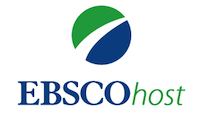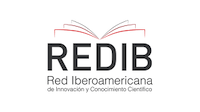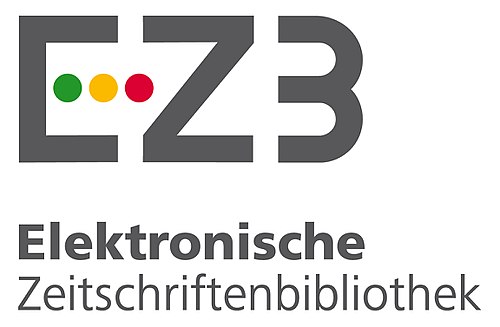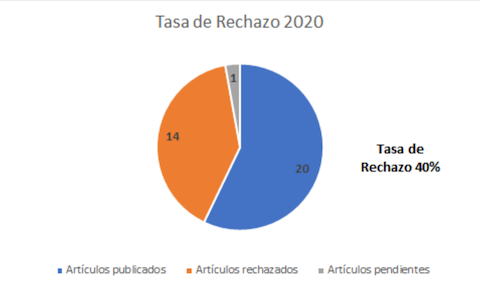Estudio de la resistencia a la tracción de depósitos de soldadura de la aleación AA2024-T3
DOI:
https://doi.org/10.18667/cienciaypoderaereo.708Palabras clave:
Resistencia mecánica, GTAW-P, fractura, agrietamiento en calienteResumen
En el presente artículo, se realiza un estudio de la resistencia a la tracción de diferentes depósitos de soldadura sobre láminas de la aleación de aluminio AA2024-T3 AlClad. La soldabilidad de la aleación, bajo procesos de arco, se considera limitada por su sensibilidad al agrietamiento en caliente y, por ello, se encuentra ampliamente estudiada en procesos de estado sólido o láser, en los que la afectación térmica es menor. La investigación tiene como objetivo estudiar el comportamiento mecánico de dicho aluminio al soldarlo con tecnología local. Para la experimentación, se realizaron depósitos con combinaciones de electrodo no consumible punto violeta, electrodo no consumible punto verde, metal de aporte ER4043 y sin metal de aporte (soldadura autógena). Los ensayos mecánicos estuvieron bajo el estándar ASTM E8 y bajo las recomendaciones del estándar AWS D1.2. Adicionalmente, se realizó el respectivo estudio de las superficies de fractura de cada uno de los depósitos. Entre los resultados, se destaca la notable reducción tanto de resistencia mecánica como de ductilidad, lo cual se debió a la alta presencia de porosidad, que desencadenó grietas de diversos tamaños, ligados, también, a una fragilización por hidrógeno y por presencia de partículas de segunda fase en los límites de grano.
Descargas
Referencias
Ahn, J., Chen, L., He, E., Davies, C. M., & Dear, J. P. (2017). Effect of filler metal feed rate and composition on microstructure and mechanical properties of fibre laser welded AA 2024-T3. Journal of Manufacturing Processes, 25, 26-36. https://doi.org/https://doi.org/10.1016/j.jmapro.2016.10.006
Ahn, J., He, E., Chen, L., Dear, J., & Davies, C. (2017). The effect of Ar and He shielding gas on fibre laser weld shape and microstructure in AA 2024-T3. Journal of Manufacturing Processes, 29, 62-73. https://doi.org/https://doi.org/10.1016/j.jmapro.2017.07.011
Ambriz, R. R., & Jaramillo, D. (2014). Mechanical behavior of precipitation hardened aluminum alloys welds. Light Metal Alloys Applications, 35-59.
American Welding Society (2014). AWS D1.2/D1.2M: 2014 - Structural Welding Code-Aluminum (6th Ed.). American National Standard Institute.
American Welding Society (2016). AWS B4.0:2016 - Standard Methods for Mechanical of Welds (8th Ed.). American National Standards Institute.
American Welding Society (2020a). ANSI/AWS A2.4-20 - Standard Symbols for Welding, Brazing, and Nondestructive Examination. American National Standards Institute.
American Welding Society (2020b). ANSI/AWS A3.09-20 - Standard Welding Terms and Definitions. American National Standards Institute.
ASM International (2002). ASM Volume 11 - Failure Analysis and Prevention. En ASM Handbook. Materials Park.
ASM International (2020a). ASM Volume 2 - Properties and Selection: Nonferrous Alloys and Special Purpose Materials. En ASM Handbook. Materials Park.
ASM International. (2020b). asm Volume 6 - Welding, Brazing and Soldering. En ASM Handbook. Materials Park.
ASTM B209-14. (2014). Aluminum and Aluminum-Alloy Sheet and Plate 1. ASTM International, 1-25. https://doi.org/10.1520/B0209-14.2
ASTM E8/E8M-21 (2021). Standard test methods for tension testing of metallic materials 1. astm International, 1-27. https://doi.org/10.1520/E0008
Böllinghaus, T., & Herold, H. (2005). Hot Cracking Phenomena in Welds. Springer. https://books.google.com.co/books?id=pLprPeLY-T0C
Cavaliere, P., Nobile, R., Panella, F. W., & Squillace, A. (2006). Mechanical and microstructural behaviour of 2024- 7075 aluminium alloy sheets joined by friction stir welding. International Journal of Machine Tools and Manufacture, 46(6), 588-594. https://doi.org/10.1016/j.ijmachtools.2005.07.010
Chen, Y., Ding, H., Li, J., Zhao, J., Fu, M., & Li, X. (2015). Effect of welding heat input and post-welded heat treatment on hardness of stir zone for friction stir-welded 2024-T3 aluminum alloy. Transactions of Nonferrous Metals Society of China, 25(8), 2524-2532. https://doi.org/10.1016/S1003-6326(15)63871-7
Du, J., Zhao, G., & Wei, Z. (2019). Effects of Welding Speed and Pulse Frequency on Surface Depression in Variable Polarity Gas Tungsten Arc Welding of Aluminum Alloy. Me- tals, 9(2), 114-134. https://doi.org/10.3390/met9020114
Esfahani, M. M., Farzadi, A., & Zaree, S. R. A. (2018). Effect of welding speed on gas metal arc weld pool in commercially pure aluminum: theoretically and experimentally. Russian Journal of Non-Ferrous Metals, 59(1), 82-92. https://doi.org/10.3103/S1067821218010121
Espejo Mora, É., & Hernández Albañil, H. (2017). Análisis de fallas de estructuras y elementos mecánicos. Universidad Nacional de Colombia.
Fu, R., Zhang, J., Li, Y., Kang, J., Liu, H., & Zhang, F. (2013). Effect of welding heat input and post-welding natural aging on hardness of stir zone for friction stir-welded 2024-T3 aluminum alloy thin-sheet. Materials Science and Engineering: A, 559, 319-324. https://doi.org/10.1016/j.msea.2012.08.105
Gowthaman, P. S., & Saravanan, B. A. (2020). Determination of weldability study on mechanical properties of dissimilar Al-alloys using Friction stir welding process. Materials Today: Proceedings. https://doi.org/10.1016/j.matpr.2020.08.599
Hashimoto, T., Zhang, X., Zhou, X., Skeldon, P., Haigh, S. J., & Thompson, G. E. (2016). Investigation of dealloying of S phase (Al2CuMg) in AA 2024-T3 aluminium alloy using high resolution 2D and 3D electron imaging. Corrosion Science, 103, 157-164. https://doi.org/10.1016/j.corsci.2015.11.013
Hatch, J. E. (1984). Aluminum Properties and Physical Metallurgy. Aluminum Science and Technology. ASM International. https://doi.org/10.1361/appm1984p001
Hima Bindu, A., Chaitanya, B. S. K., Ajay, K., & Sudhakar, I. (2020). Investigation on feasibility of dissimilar welding of AA2124 and AA7075 aluminium alloy using tungsten inert gas welding. Materials Today: Proceedings, 26, 2.283-2.288. https://doi.org/10.1016/j.matpr.2020.02.494
Jones, M. J., Heurtier, P., Desrayaud, C., Montheillet, F., Alle- haux, D., & Driver, J. H. (2005). Correlation between microstructure and microhardness in a friction stir welded 2024 aluminium alloy. Scripta Materialia, 52(8), 693-697. https://doi.org/10.1016/j.scriptamat.2004.12.027
Kou, S, & Le, Y. (1988). Welding parameters and the grain structure of weld metal-A thermodynamic consideration. Metallurgical Transactions A, 19(4), 1.075-1.082. https://doi.org/10.1007/BF02628392
Kou, Sindo. (2003). Welding Metallurgy (2nd Ed.). John Wiley & Sons, Inc. https://doi.org/10.1016/S00167878(62)80017-0
Lancaster, J. F. (1999). Metallurgy of Welding (6th Ed.). Abington Publishing.
Liang, M., Chen, L., Zhao, G., & Guo, Y. (2020). Effects of solution treatment on the microstructure and mechanical properties of naturally aged EN AW 2024 Al alloy sheet. Journal of Alloys and Compounds, 824, 153943. https://doi.org/10.1016/j.jallcom.2020.153943
Lippold, J. C. (2015). Welding metallurgy and weldability. John Wiley & Sons, Inc.
Lippold, J., Böllinghaus, T., & Cross, C. E. (2011). Hot cracking phenomena in welds III. Springer Science & Business Media.
Liu, J., & Kou, S. (2017). Susceptibility of ternary aluminum alloys to cracking during solidification. Acta Materialia, 125, 513-523. https://doi.org/10.1016/j.actamat.2016.12.028
Liu, Y., Teng, F., Cao, F. H., Yin, Z. X., Jiang, Y., Wang, S. B., & Shen, P. K. (2019). Defective GP-zones and their evolution in an Al-Cu-Mg alloy during high-temperature aging.
Journal of Alloys and Compounds, 774, 988-996. https://doi.org/10.1016/j.jallcom.2018.10.061
Maamar, H., Mohamed, K., Rafik, R. O., Toufik, F., Nabil, D., & Djilali, A. (2008). Heat treatment and welding effects on mechanical properties and microstructure evolution of 2024 and 7075 aluminium alloys. Materiali in Tehnologije, 42(1), 18.
Mathers, G. (2002). The Welding of aluminium and its alloys. CRC Press.
Miller, P. L., Lyttle, K. A., Neff, J. B., Steyer, D. A., & Pierce., K.
G. (2013). Welding Gas Compositions and Method for Use (20150165565). Patent Application Publication. https://patents.justia.com/patent/20150165565#history
Mohapatra, S., & Sarangi, H. (2016). Comparison between tungsten inert gas and friction stir welding in commercial aluminium alloy plates. Journal of Chemical and Pharmaceutical Sciences, 2(3), 1.485-1.490.
Mondolfo, L. F. (1976). Aluminum Alloys: Structure and Properties. Butterworths.
Mouritz, A. P. (2012). Introduction to aerospace materials. Jour- nal of the Korean Medical Association (Vol. 55). Woodhead Publishing. https://doi.org/10.5124/jkma.2012.55.7.649
Norman, A. F., Drazhner, V., & Prangnell, P. B. (1999). Effect of welding parameters on the solidification microstructure of autogenous TIG welds in an Al-Cu-Mg-Mn alloy. Materials Science and Engineering: A, 259(1), 53-64. https://doi.org/10.1016/S0921-5093(98)00873-9
Prakash, S., Kumar, R. J. F., & Jerome, S. (2018). Effect of heat treatment on microstructure and mechanical properties of CMT welded Aluminium alloy 2024. Materials Today: Proceedings, 5(13), 26.997-2.7003. https://doi.org/10.1016/j.matpr.2018.09.003
Qi, Z., Qi, B., Cong, B., Sun, H., Zhao, G., & Ding, J. (2019). Microstructure and mechanical properties of wire + arc additively manufactured 2024 aluminum alloy components: As-deposited and post heat-treated. Journal of Manufacturing Processes, 40, 27-36. https://doi.org/10.1016/j.jmapro.2019.03.003
Soysal, T., & Kou, S. (2019). Effect of filler metals on solidification cracking susceptibility of Al alloys 2024 and 6061. Journal of Materials Processing Technology, 266, 421-428. https://doi.org/10.1016/j.jmatprotec.2018.11.022
Squillace, A., De Fenzo, A., Giorleo, G., & Bellucci, F. (2004). A comparison between FSW and TIG welding techniques: modifications of microstructure and pitting corrosion resistance in AA 2024-T3 butt joints. Journal of Materials Processing Technology, 152(1), 97-105. https://doi.org/10.1016/j.jmatprotec.2004.03.022
Tier, M., Santos, J. F. dos, Souza Rosendo, T. de, Mazzaferro, J. A. E., Mazzaferro, C. C. P., Strohaecker, T. R., Bergmann, L., Olea, C., & Silva, A. (2009, 13-17 de julio). A study about the mechanical properties of Alclad AA 2024 connections processed by friction spot welding 1 [conferencia]. 64.o Congresso Internacional da Associação Brasileira de Metalurgia, Belo Horizonte, Brasil. https://www.researchgate.net/publication/280081104_A_Study_About_the_Mechanical_Properties_of_Alclad_AA2024_Connections_Processed_by_Friction_Spot_Welding_1
Vijay, S., Rajanarayanan, S., & Ganeshan, G. N. (2020). Analysis on mechanical properties of gas tungsten arc welded dissimilar aluminium alloy (Al2024 & Al6063). Materials Today: Proceedings, 21, 384-391. https://doi.org/10.1016/j.matpr.2019.06.136
Wang, S. B., Liu, Z. R., Xia, S. L., Key, J., & Chen, J. H. (2017). Tetragonal-prism-like Guinier-Preston-Bagaryatsky zones in an AlCuMg alloy. Materials Characterization, 132, 139-144. https://doi.org/10.1016/j.matchar.2017.08.014
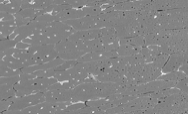
Publicado
Número
Sección
Categorías
Licencia
Declaración de cesión de los derechos de autor a la revista
Los autores ceden la Revista los derechos de explotación (reproducción, distribución, comunicación pública y transformación) para explotar y comercializar la obra, entera o en parte, en todos los formatos y modalidades de explotación presentes o futuros, en todos los idiomas, por todo el periodo de vida de la obra y por todo el mundo.
Todos los contenidos publicados en la revista científica Ciencia y Poder Aéreo están sujetos a la licencia reconocimiento 4.0 Internacional de Creative Commons, cuyo texto completo se puede consultar en http://creativecommons.org/licenses/by/4.0/
La licencia permite a cualquier usuario descargar, imprimir, extraer, archivar, distribuir y comunicar públicamente este artículo, siempre y cuando el crédito se dé a los autores de la obra: a los autores del texto y a Ciencia y Poder Aéreo, Revista Científica de la Escuela de Postgrados de la Fuerza Aérea Colombiana. Excepto cuando se indique lo contrario, el contenido en este sitio es licenciado bajo una licencia Creative Commons Atribución 4.0 internacional.
Para usos de los contenidos no previstos en estas normas de publicación es necesario contactar directamente con el director o editor de la revista a través del correo cienciaypoderaereo@epfac.edu.
La Escuela de Postgrados de la Fuerza Aérea Colombiana y esta publicación no son responsables de los conceptos emitidos en los artículos, ni de los metadatos aportados ni de las filiaciones que los autores declaren, ya que esta es responsabilidad plena de los autores.



